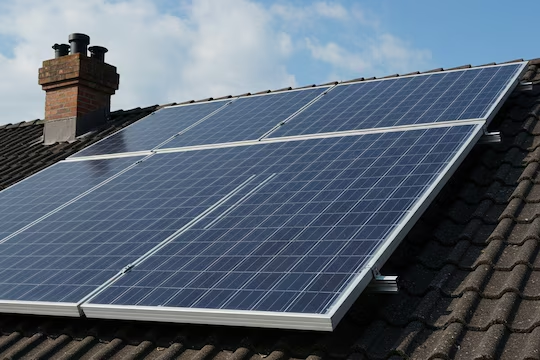27 May 2025 : No matter how rich or poor someone is, everyone is seen to be troubled by rising electricity bills. When the heat is very high, electronics like ACs, refrigerators, and coolers consume a lot of electricity at home. In winters, more electricity is consumed to keep the house warm.
At such times, if some technology can produce more and cheaper electricity from our rooftops, wouldn’t that be nothing less than a miracle? You might say this can be done by installing solar panels—what’s miraculous about that? But believe me, a technology almost like a miracle has been developed, and that too in India.
Actually, scientists at IIT Bombay have developed a new solar cell through their hard work that can produce about 25-30% more electricity than conventional technology so far. Currently, solar panels convert roughly 20% of energy into electricity; with this new technology, the efficiency has reached up to 30%. This means not only will more electricity be produced, but the cost will also decrease significantly. Currently, the cost of one unit of solar energy ranges from ₹2.5 to ₹4, but with this technology, the cost could drop to just ₹1 per unit.
The material used in the tandem solar cell is made in India…
According to a report published in Indian Express, this work was made possible by Professor Dinesh Kabra and his team. This team is working at IIT Bombay’s National Centre for Photovoltaic Research and Education (NCPRE). They have developed a special type of solar cell called a “tandem solar cell.” It uses a special material called ‘halide perovskite’ in the upper layer, which generates better electricity even in very low light. The lower layer is silicon, which is already in use. Together, they create a combination that produces more electricity.
This technology is not only effective but also uses raw materials available in India. Until now, materials used in solar panels had to be imported from countries like China. The materials used in this new technology will be made in India, reducing India’s dependence on countries like China.
Earlier, the biggest drawback of perovskite was its short lifespan, but IIT Bombay’s team has made it durable for up to 10 years. This is also a significant achievement in the energy sector.
A big responsibility on the shoulders of Maharashtra government and IIT Bombay
The responsibility to bring this technology to the ground now lies with the Maharashtra government and a startup linked with IIT Bombay named ART-PV India Private Limited. They are working to fully prepare this technology for the market by December 2027. The startup is backed by Professor Kabra himself, who developed this technology. Notably, the machines and equipment for this will be made in India.
This technology will not be limited to large solar farms but can also be installed on home rooftops, vehicle roofs, and building walls—meaning more electricity and more savings in less space.
Moreover, IIT Bombay and the Maharashtra government plan to use this technology for producing ‘green hydrogen’—clean and environmentally friendly hydrogen—which is very important for future energy needs.
Summary:
New affordable home electricity generation technology offers power at only ₹1 per unit, helping households cut down on electricity expenses significantly.


